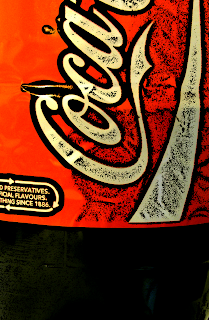I am extremely pleased with this weeks images and I think overall they are a very successful set of images. The original idea was not to make them look scary but I really like this quality they have. The most scary aspect of it for me was going back to something I'd spent much of my childhood building and collecting for. Back then the whole dolls house was very sweet and innocent, now it has that eerie aspect from the images which somehow sap all the innocence out of it. One way I'd have loved to imposve these is by using a proper macro lens rather than a simple macro setting on my camera.
Inspiration
My inspiration for this week was a photographer called Matthew Albanese who I saw on
The Sun website with his
Mother Nature series.
"My work involves the construction of small-scale meticulously detailed models using various materials and objects to create emotive landscapes. Every aspect from the construction to the lighting of the final model is painstakingly pre-planned using methods which force the viewers perspective when photographed from a specific angle. Using a mixture of photographic techniques such as scale, depth of field, white balance and lighting I am able to drastically alter the appearance of my materials. "
Below are some examples of Albanese' work.
This shows how Albanese creates his work. He simply makes a little world or surrounding to create these wonderful images.
"Made out of tile grout, cotton, phosphorous ink. This model volcano was illuminated from within by 6-60 watt light bulbs."
Another example of Albanese making his work.
"Fields, After the Storm. This model is simply made out of faux fur(fields), cotton (clouds) and sifted tile grout(mountains). The perspective is forced as in all of my images, and the lighting effect was created by simply shifting the white balance."
Sugarland, Made out of 20 pounds of sugar, jello and corn syrup. The crystals were grown in my studio over the course of two months.
Aurora Borealis. This one was made by photographing a beam of colored light against a black curtain to achieve the edge effect. The trees were composited from life ( so far the only real life element in any of these images) The stars are simply strobe light through holes in cork board.
Tornado made of steel wool, cotton, ground parsley and moss
This one is a mixture of many different materials, tile grout, moss, bottle brushes (pine trees) Actual clippings from ground cover and was built on top of standard outdoor patio table (water glass). The sky is canvas painted blue. Coloring was again achieved by shifting white balance.
This is the one which gave me the dolls house idea, although I didn't want to set fire to my childhood. Burning Room, Made of wood, nylon, plexiglass, purchased dollhouse furniture. The model was actually set on fire to achieve this effect.







































